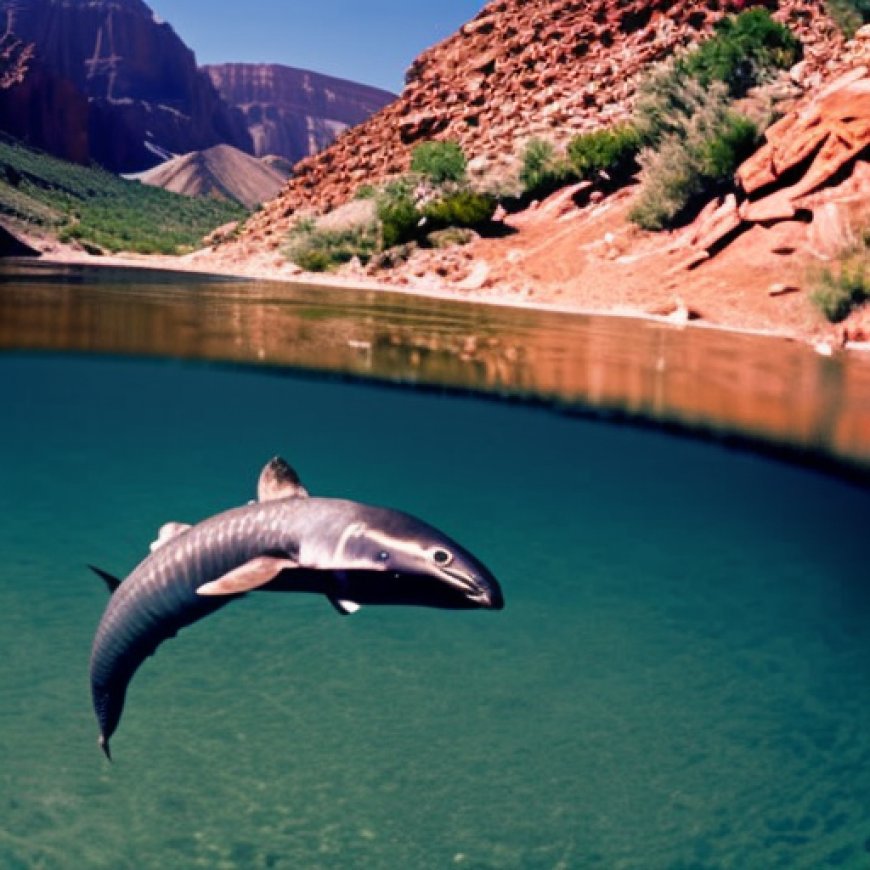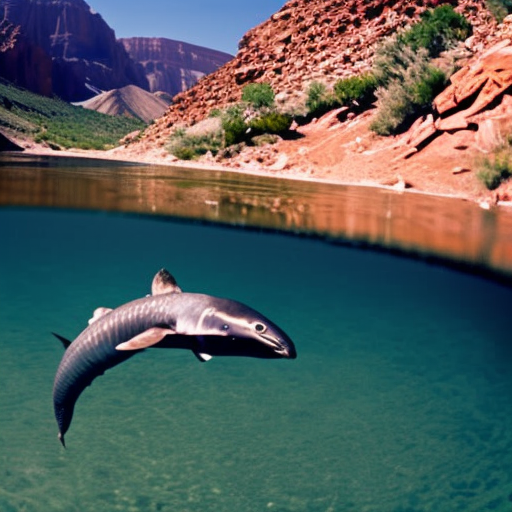Federal Agency Rejects Arizona Pumped Storage Project Threatening Humpback Chub, Little Colorado River
Federal Agency Rejects Arizona Pumped Storage Project Threatening Humpback Chub, Little Colorado River Center for Biological Diversity


FLAGSTAFF, Ariz. – Federal Energy Regulatory Commission Denies Preliminary Permit Application for Big Canyon Pumped Storage Project

Introduction
Responding to opposition from the Navajo Nation, the Federal Energy Regulatory Commission (FERC) has denied a preliminary permit application for the Big Canyon pumped storage project on the Little Colorado River near Grand Canyon National Park.
The Threat to Biodiversity
The project proposed to pump groundwater to fill reservoirs below and above the rim of the Little Colorado River gorge. This would have threatened Blue Springs, which provides baseflows for the river and sustains the largest remaining source population of humpback chub. These fish are protected as threatened under the Endangered Species Act.
Environmental Impact
Taylor McKinnon, Southwest director at the Center for Biological Diversity, stated, “This disastrous project could have devastated the Little Colorado River and pushed the world’s last large source population of humpback chub toward extinction. It’s good news for these embattled fish that federal officials heeded the Navajo Nation’s staunch opposition and rejected this project.”
Other Proposed Projects
The Phoenix-based firm behind the Big Canyon project had also proposed two other pumped storage projects in the same area, the Little Colorado River and Salt Trail Canyon projects. Both of these projects would have dammed the Little Colorado River, posing a similar threat to humpback chub. However, these projects have since been scrapped.
Tribal Opposition
The denial of the Big Canyon project is the result of a policy change announced in February, which now requires Tribal support for projects on Tribal lands. The Navajo Nation, Hopi Tribe, Hualapai Tribe, and other Tribes opposed the Big Canyon project as well as the two other Little Colorado River pumped storage proposals.
SDGs, Targets, and Indicators Analysis
1. Which SDGs are addressed or connected to the issues highlighted in the article?
- SDG 6: Clean Water and Sanitation
- SDG 14: Life Below Water
- SDG 15: Life on Land
The article discusses the threat posed by the Big Canyon pumped storage project to the Little Colorado River and the humpback chub, which is a threatened species protected under the Endangered Species Act. This connects to SDG 6, which aims to ensure availability and sustainable management of water and sanitation for all. It also relates to SDG 14, which focuses on the conservation and sustainable use of oceans, seas, and marine resources. Additionally, it is connected to SDG 15, which aims to protect, restore, and promote sustainable use of terrestrial ecosystems and halt biodiversity loss.
2. What specific targets under those SDGs can be identified based on the article’s content?
- SDG 6.6: Protect and restore water-related ecosystems
- SDG 14.2: Sustainably manage and protect marine and coastal ecosystems
- SDG 15.5: Take urgent and significant action to reduce degradation of natural habitats
The article highlights the potential devastation of the Little Colorado River and the humpback chub population due to the Big Canyon pumped storage project. To address this, specific targets under SDG 6, SDG 14, and SDG 15 can be identified. SDG 6.6 aims to protect and restore water-related ecosystems, which includes rivers like the Little Colorado River. SDG 14.2 focuses on sustainably managing and protecting marine and coastal ecosystems, which is relevant to the conservation of the humpback chub population. SDG 15.5 calls for urgent and significant action to reduce the degradation of natural habitats, including the habitats of threatened species like the humpback chub.
3. Are there any indicators mentioned or implied in the article that can be used to measure progress towards the identified targets?
- Indicator for SDG 6.6: Proportion of water bodies with good ambient water quality
- Indicator for SDG 14.2: Proportion of coastal and marine areas protected
- Indicator for SDG 15.5: Red List Index
The article does not explicitly mention specific indicators, but based on the identified targets, relevant indicators can be used to measure progress. For SDG 6.6, the proportion of water bodies with good ambient water quality can be used as an indicator to assess the protection and restoration of water-related ecosystems. For SDG 14.2, the proportion of coastal and marine areas protected can be used as an indicator to evaluate the sustainable management and protection of marine and coastal ecosystems. Lastly, the Red List Index can be used as an indicator for SDG 15.5 to measure the reduction in degradation of natural habitats and the conservation status of threatened species like the humpback chub.
4. Table: SDGs, Targets, and Indicators
| SDGs | Targets | Indicators |
|---|---|---|
| SDG 6: Clean Water and Sanitation | 6.6: Protect and restore water-related ecosystems | Proportion of water bodies with good ambient water quality |
| SDG 14: Life Below Water | 14.2: Sustainably manage and protect marine and coastal ecosystems | Proportion of coastal and marine areas protected |
| SDG 15: Life on Land | 15.5: Take urgent and significant action to reduce degradation of natural habitats | Red List Index |
This table summarizes the identified SDGs, targets, and indicators based on the analysis of the article. It provides a clear overview of the relevant goals, specific targets, and indicators that can be used to measure progress towards addressing the issues discussed in the article.
Copyright: Dive into this article, curated with care by SDG Investors Inc. Our advanced AI technology searches through vast amounts of data to spotlight how we are all moving forward with the Sustainable Development Goals. While we own the rights to this content, we invite you to share it to help spread knowledge and spark action on the SDGs.
Fuente: biologicaldiversity.org

Join us, as fellow seekers of change, on a transformative journey at https://sdgtalks.ai/welcome, where you can become a member and actively contribute to shaping a brighter future.







